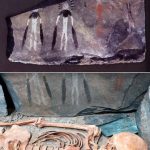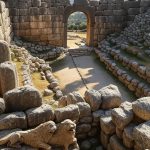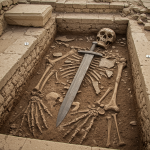Stunning Discovery in Peru: Mummified Sacrificial Llamas from the Inca Era Unearthed

In 2018, a team of archaeologists announced a remarkable discovery at the Tambo Viejo archaeological site on Peru’s southern coast: five mummified llamas preserved for over 500 years. What makes the find especially striking is that the animals still bore their ceremonial decorations—colorful woven strings, red paint, and feather adornments—applied by the Inca before they were ritually sacrificed. Researchers believe the llamas were likely buried alive as part of a sacred ceremony, reflecting the Inca’s profound spiritual connection between the human world and the divine.

Archaeological evidence suggests that this was a large-scale ritual, possibly held to commemorate major events such as harvest festivals, thanksgiving rites, or the ascension of a ruler. Llamas—highly valued in Inca society for transport and symbolic significance—were clearly chosen for their central role in both daily life and religious practice. The ornate decorations found with the mummies highlight the importance of these animals within the Inca spiritual worldview.

The exceptional preservation of the llamas has given scientists a rare opportunity to better understand ancient ceremonial practices, customs, and beliefs of the Inca civilization. This discovery not only sheds light on the sacred aspects of Inca life but also raises new questions about their relationship with sacrifice, nature, and divine communication. It stands as a vivid testament to the richness and complexity of one of South America’s greatest pre-Columbian empires.











